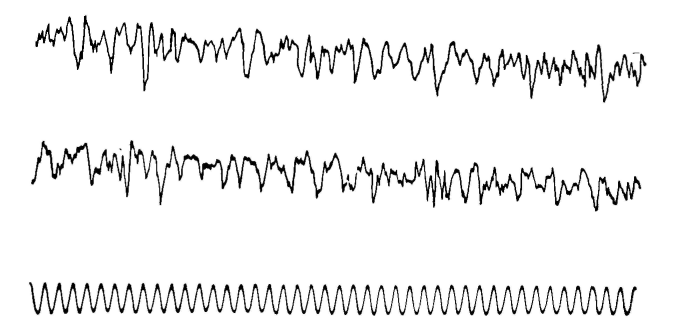| Electrical Communication is a free textbook on the basics of communication technology. See the editorial for more information.... |

|

Home  Fundamentals of Acoustics Fundamentals of Acoustics  Noise Noise |
|||






|
|||
NoiseIn communication, noises are objectionable because of their interfering effect. Noise is defined11 as any unwanted sound. Thus, radio music may be undesired by a person using a telephone and is thus an interfering noise. Noise, such as shown in Fig. 13, is perhaps the worst enemy of communication engineers. In telephone work, room noise affects the conversation in two ways. First, noises interfere with telephone conversation by the leakage of sound around the receiver cap. Noise has little interfering influence on the free ear of the telephone user. Second, room noise will actuate the telephone transmitter, and this in turn may operate the local receiver through sidetone and also affect the distant receiver.
If the amount of noise cannot be reduced, an alternative is to raise the power level of the speech or music being transmitted. For example, troublesome static can often be made less noticeable if the power output of the broadcasting station is increased. The static as received is then relatively weak compared to the level of the program, and after amplification in the set is still relatively weak. Similarly, it is necessary to supply the average telephone user much more power than would be needed if the line and room noises were eliminated.
|
|||
Home  Fundamentals of Acoustics Fundamentals of Acoustics  Noise Noise |
|||
Last Update: 2011-05-30


